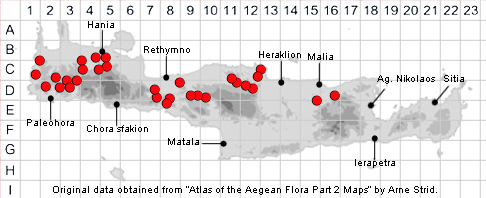SPECIES DESCRIPTION
ERICA ARBOREA
Family and Genus:- See- ERICACEAE
Common Names:- Tree heath
Homotypic Synonyms:- Arsace arborea, Erica procera, Ericoides arboreum.
Meaning:- Erica (L) Pliny's version of an ancient Greek name.
Arborea (L) Tree-like, branched.
General description:- Shrub or small tree 1-4(-7) m; young twigs densely
pubescent with short, smooth hairs and longer, strongly echinate hairs.
Leaves:-
1) 3-5 mm, in whorls of (3-)4, linear, erecto-patent glabrous, denticulate rather dark
green; margins revolute, contiguous, completely concealing the lower surface.
Flowers:-
1) In lateral racemes, usually aggregated to form a thyrsoid, terminal or intercalary
panicle.
2) Pedicels, glabrous, with 2-3 minute bracteoles below the middle.
3) Sepals, 1·5 mm, ovate, glabrous, saccate at the base.
4) Corolla, 2·5-4 mm, white, broadly campanulate with erect lobes.
5) Anthers, included, with flat, basal ciliate appendages.
6) Ovary, glabrous.
7) Style, stout.
8) Stigma, broadly capitate, white.
Fruit:-
1) Loculicidal.capsule.
Key features:-
1) Anthers, with basal appendages.
2) Leaves, with contiguous revolute margins, which entirely concealed the lower
surface.
3) Bracteoles, confined to basal half of pedicel, not over-lapping the sepals.
4) Some of the hairs on young twigs densely echinate.
5) Corolla, 2·5-4 mm, pure white.
6) Stigma, broadly capitate, white.
Habitat:- An important constituent of scrubland vegetation on rocky slopes, usually,
of non-calcareous substrates. 0-900(-1300) m.
Distribution:- Mediterranean area and Anatolia, Canary islands, mountains of
Sahara, E africa and Yemen but not Cyprus or the extreme E Med. Fairly common
in the west of Crete, but restricted to non-calcareous substrates, mainly in the west
Flowering time:- Mar-June, sporadically at other times.
Photos by:- Fotis Samaritakis
